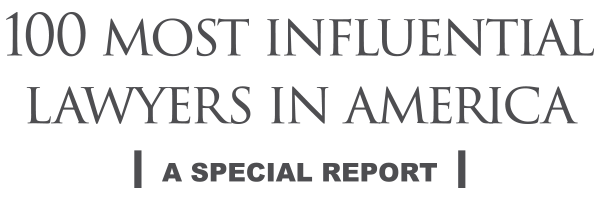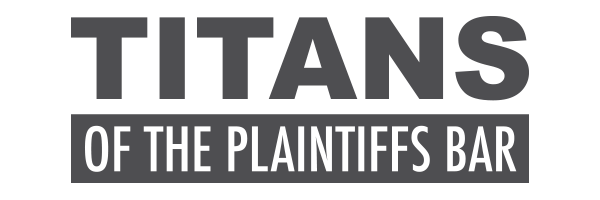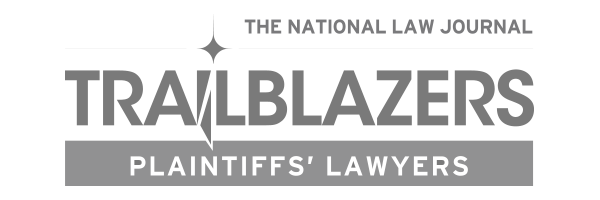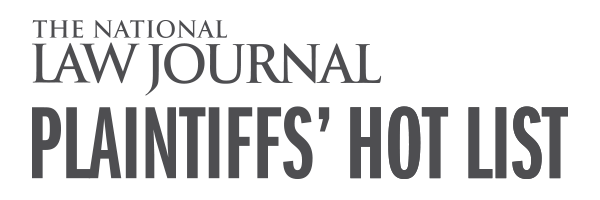LEVELING THE PLAYING FIELD FOR COLLEGE ATHLETES
College athletes have long been an integral part of one of the largest media conglomerates in U.S. history, college sports. The most necessary and skilled component of the NCAA’s moneymaking venture, they historically have also been the least compensated, mercilessly denied fair compensation for their talent, their image use and rights, their injuries and their rights to college transfers.
Our legal team is on their team.
No other law firm has stood against the NCAA as comprehensively as Hagens Berman, which has successfully brought class-action litigation against the NCAA concerning concussions; name, image and likeness (NIL) rights; and caps on grants-in-aid payments made to college athletes by schools and conferences.
Click to view:
- VICTORIES & SETTLEMENTS vs. THE NCAA
-
NCAA Grants-in-Aid Scholarships Litigation (aka “Alston case,” in the press)
$208 million settlement, and permanent injunction upheld by the U.S. Supreme Court
Hagens Berman’s antitrust class action, claiming the NCAA had violated the law when it kept the class from being able to receive compensation other than cash by schools or conferences for athletic services, culminated in a $208 million settlement. The Supreme Court upheld the favorable opinion of the Ninth Circuit in a 9-0 ruling. Justice Kavanaugh’s opinion further underscored the massive win for plaintiffs and the ruling’s ongoing effects.NCAA Name, Image and Likeness (NIL) Litigation
Damages and injunctive class certifications
Using the Alston precedent, Hagens Berman’s NIL lawsuit accuses the NCAA and conferences of illegally limiting the compensation that Division I college athletes may receive for the use of their names, images, likenesses and athletic reputations. Thousands of college athletes have taken advantage of the NIL opportunities opened by the Alston case to the tune of multimillion-dollar deals now available to them since the NCAA loosened its restrictions on July 1, 2021.In 2023, three classes of college athletes were certified regarding damages in the case, meaning, the NCAA faces monetary loss in the lawsuit, not just court action restraining its antitrust behavior. Damages would be based on payments college athletes would have received if not for the NCAA’s restraints. These revenues include those from three areas: television broadcasts, video games and other revenue sources.
NCAA Concussions
$75 million settlement, and 50-year medical monitoring fund
The firm’s lawsuit against the NCAA concerning concussions culminated in a proposed settlement that will provide a 50-year medical-monitoring program for student-athletes to screen for and track head injuries; make sweeping changes to the NCAA’s approach to concussion treatment and prevention; and establish a $5 million fund for concussion research, approved by the court.Samuel Keller et al v. Electronic Arts Inc and National Collegiate Athletic Association
$60 million in total settlements
Hagens Berman brought this groundbreaking case that marked the first time in the history of the NCAA that the organization is paying student-athletes for rights related to their play on the field, compensating them for their contribution to the profit-making nature of college sports. The settlements were reached in 2014, and more than 24,000 student-athletes were found eligible to receive payment under the settlements. Checks were issued to approximately 15,000 players, some for up to $7,600, with a median amount of $1,100. - FROM THE COURTROOM TO THE LOCKER ROOM
-
Hagens Berman’s class-action lawsuits against the NCAA have brought college athletes’ rights into the spotlight, but how can the law benefit college athletes?
Many of the firm’s lawsuits hinge on antitrust law, a federally protected right to fair, competitive markets in the United States. Hagens Berman’s application of these laws against the NCAA have been novel and revolutionary, helping change the national landscape of college sports forever.
Below is a timeline of the firm’s litigation against the NCAA and the national impact of the firm’s renown sports litigation practice. Together, these cases were the true catalyst for the first payments the NCAA ever made to college athletes for rights related to their play on the field:
2004 | NCAA Walk-On Players Andy Carroll v. NCAA
Hagens Berman began its representation of NCAA college athletes seeking to represent a proposed class of thousands of walk-on players claiming the NCAA’s cost-cutting scholarship restrictions exploited them. The lawsuit accused the NCAA of illegal restraint while “stadiums gain glitz and coaches get rich.” According to the lawsuit, prior to 1977, schools were permitted to offer as many scholarships as they deemed appropriate, but today the NCAA limits the number to 85.2008 | NCAA Consumer Ticket Prices George et al. v. NCAA and Ticketmaster
In this proposed class action, Hagens Berman accused the NCAA and Ticketmaster of operating illegal lotteries to sell and distribute tickets to certain NCAA Division 1 championship tournaments. The lawsuit sought to represent consumers who attempted to buy tournament tickets by participating in lotteries set up by the NCAA.2009 | Video Game NIL Samuel Keller et al v. Electronic Arts Inc and National Collegiate Athletic Association
Hagens Berman filed a class-action lawsuit against the NCAA and Electronic Arts, Inc. claiming the companies illegally use college football and basketball players' names and likenesses in video games without permission or consent from the player. The Keller case established college athletes’ right to recover the value of their NIL if it was used without their consent, and Alston went on to show that not permitting those rights to be managed by the student-athletes themselves was improper.2009 | Video Game NIL O’Bannon v. NCAA
In a separate lawsuit, the firm represented former UCLA basketball player Ed O’Bannon in a case challenging the NCAA’s use of college athlete publicity rights in television broadcasts. The O’Bannon case was denied class certification, and a federal judge’s favorable ruling on the case’s claims was partially reversed by an appeals court in 2015. It was denied review by the Supreme Court in 2016.2010 | NCAA Financial Aid & Compensation Agnew v. NCAA
In Agnew v. NCAA, the firm filed a proposed national class-action lawsuit claiming the authority governing most aspects of collegiate sports has conspired with colleges and universities to impose artificial limits on sports scholarships, actions the suit claims violate federal antitrust laws. The lead plaintiff in the lawsuit, former Rice University football player Joseph Agnew, had been heavily recruited by several top-tier Division I schools. Agnew accepted a full scholarship to Rice and played football starting in 2006 as a freshman. During his sophomore year, the coach who recruited Agnew left Rice to coach at another Division I school, and Agnew saw his playing time significantly reduced under the new coaching regime, according to the lawsuit.2011 | NCAA Concussions Owens et al. v NCAA
In this proposed class action, the firm represented Andre Owens, a former Howard University football player, against the NCAA and the university, claiming “…up until 2010, Defendants NCAA and Howard kept players and the public in the dark about an epidemic that was slowly killing former college athletes.” In a single football season, the complaint reads, athletes absorb more than 1,000 impacts greater than 10 Gs (gravitational forces), with the majority of them exceeding 20 Gs, and some approaching 100 Gs or force.2012 | NCAA Concussions Arrington et al. v NCAA
This class action merged the Owens case with claims from various plaintiffs – Derek Owens, Mark Turner and Angela Palacio. to bring further pressure on the NCAA, urging swift action to minimize impacts of the NCAA’s alleged ongoing negligence and oversight concerning concussions, protocols and return-to-play guidelines.2012 | NCAA Financial Aid & Compensation Rock v. NCAA
A highly recruited college quarterback whose scholarship was revoked after a coaching change challenged the NCAA in court, claiming that the organization’s limits on scholarships violate federal antitrust laws. Rock was recruited by a number of Division I schools, and ultimately decided to attend Gardner-Webb University in North Carolina after the school offered a football scholarship. The coach at Gardner-Webb allegedly promised Rock that as long as he remained eligible for competition and kept his grades up, he would get to keep his scholarship. However, shortly after Rock agreed to take an internship, Wardner-Webb replaced its football coach. The new coach questioned Rock’s commitment to the team and expressed dissatisfaction with his choice to accept the internship, which would necessitate missing some practice sessions, the complaint states. Ultimately, Rock’s scholarship was revoked.2013 | NCAA Concussions Silk v. Bowling Green University
In the continued fight for college athletes’ health and wellness, Hagens Berman filed a lawsuit against Bowling Green State University and its football staff members on behalf of a former college athlete, Cody Silk, alleging that they failed to protect the player from multiple concussions and residual head trauma.2014 | NCAA Concussions Walen v. Portland State University et al.
Hagens Berman filed a lawsuit on behalf of player Zach Walen against Portland State University, Oregon Health Sciences University and the NCAA for failing to provide appropriate post-concussion medical care and negligently clearing him to return to football. Walen, whose father Mark Walen is a former NFL (Dallas Cowboys) player and former NCAA college football athlete, was recruited to play football for the PSU Vikings but suffered a severe concussion after receiving a direct blow to his head during his first game on Sept. 1, 2012.2014 | NCAA Financial Aid & Compensation Alston v. NCAA et al
Hagens Berman filed the first-of-its-kind lawsuit alleging that the NCAA and these five Power Conferences have systematically colluded to disrupt the free market and deprive FBS football and Division I men’s and women’s basketball players of the full economic benefits of their labor. According to the complaint, NCAA rules artificially depress the value of athletic scholarships — known as Grants-in-Aid or GIAs — to typically several thousand dollars less per year, per player, than the actual cost to attend an NCAA school.
In late 2017, U.S. District Judge Claudia Wilken granted final approval of a $208 million settlement on behalf of the tens of thousands of current and former college-athletes impacted by the prior NCAA cap on grant-in-aid scholarships. On Sept. 23, 2021, the NCAA’s Southeastern Conference (SEC) became the first conference to formally allow college-athletes to begin receiving the education-based benefits resulting from the Supreme Court’s 9-0 ruling in Hagens Berman’s Alston case. Schools are now allowed to provide benefits tethered to education up to $6,000 per year.2014 | NCAA Financial Aid & Compensation Kindler v. NCAA et al
On behalf of a former college football player, Hagens Berman filed an antitrust class-action lawsuit against the NCAA and its most powerful conference members claiming they agreed in violation of national antitrust laws to unlawfully cap the value of athletic scholarships. The plaintiff, former West Virginia University offensive lineman Nick Kindler, contended that the NCAA’s valuation of athletic scholarships is far below the actual cost of attending school, and far below what the free market would bear. The firm planned that the Alston and Kindler cases be combined so that the players could fight together for the rights of all football players in the major conferences.2015 | NCAA Insurance & Medical Bills
The firm investigated the rights to reimbursement for out-of-pocket medical expenses from athletic-related injuries for those harmed by limited health insurance coverage for college athletes.2015 | Transfer Rights Pugh v. NCAA
Former Weber State cornerback Devin Pugh filed this class-action lawsuit challenging the NCAA’s transfer rules, alleging hypocrisy when coaches change jobs. Pugh was promised a four-year scholarship at Weber State which was pulled when Wildcats coach Ron McBride retired in 2011. A year later, his grant-in-aid was no longer promised by McBride’s successor.2016 | Transfer Rights Deppe v. NCAA
The firm filed an antitrust class-action lawsuit on behalf of a Division I college-athlete at Northern Illinois University against the NCAA, calling its transfer rules “unlawful” and anticompetitive. The lawsuit sought to represent any NCAA Division I football player who, since November 2011, sought to transfer from one NCAA Division I football school to another, but was athletically ineligible to participate in NCAA Division I football for any period under the NCAA’s transfer rules.2016 | Transfer Rights Vassar v. NCAA
In this proposed class action, the plaintiff, John “Johnnie” Vassar, was a men’s basketball player who joined Northwestern during the 2014-2015 academic year. The suit states that the transfer rules established by the NCAA and carried out by Northwestern, “restrict the freedom of student athletes in violation of antitrust law.” After accepting an athletic scholarship to Northwestern, Johnnie was subjected to a variety of efforts from the university to transfer and to take away his athletic scholarship, including verbal harassment, falsified records of misconduct and more.2020 | Name, Image and Likeness Rights House v. NCAA
Hagens Berman represents Grant House, a current member of ASU men’s swimming and diving team, and Sedona Prince, a current member of the University of Oregon women’s basketball team, in a class-action lawsuit against the NCAA. The lawsuit seeks to hold the NCAA accountable to college athletes via injunction and damages for the NCAA’s alleged antitrust violations regulating the profits gained from the use of college athletes’ names, images and likenesses.2023 | Post-Alston Scholarship Payments | Hubbard v. NCAA
Hagens Berman filed this follow up lawsuit to Alston alleging that certain NCAA member schools have failed to comply with the Alston ruling establishing that member schools may pay college athletes up to $5,980 in funds as part of their recruiting, allegedly preventing college athletes from receiving the payments they deserve.2023 | NCAA Pay-for-Play | Carter v. NCAA et al.
Hagens Berman filed a new lawsuit against the NCAA alleging it has violated antitrust laws via its rules preventing student athletes from receiving a portion of television broadcast and other revenue produced by their labor. The Power Five Conferences alone hold contracts that will generate $20 billion in TV broadcast revenue, of which student athletes will not see a dime, and Hagens Berman believes this is a clear example of illegal wage-fixing.2023 | Rights to Fair Play: Title IX
Hagens Berman is investigating reports that a number of intercollegiate athletics programs may have violated Title IX, a federal law that prohibits gender discrimination at publicly funded universities. For example, reports found that, in the 2018-19 and 2019-20 seasons, for every dollar Division I schools spent on travel, equipment and recruitment for male athletes, they spent only 71 cents on female athletes. Additionally, some universities may have artificially inflated the number of women on their athletics rosters to make it appear that they are in compliance with Title IX when they actually are not.












